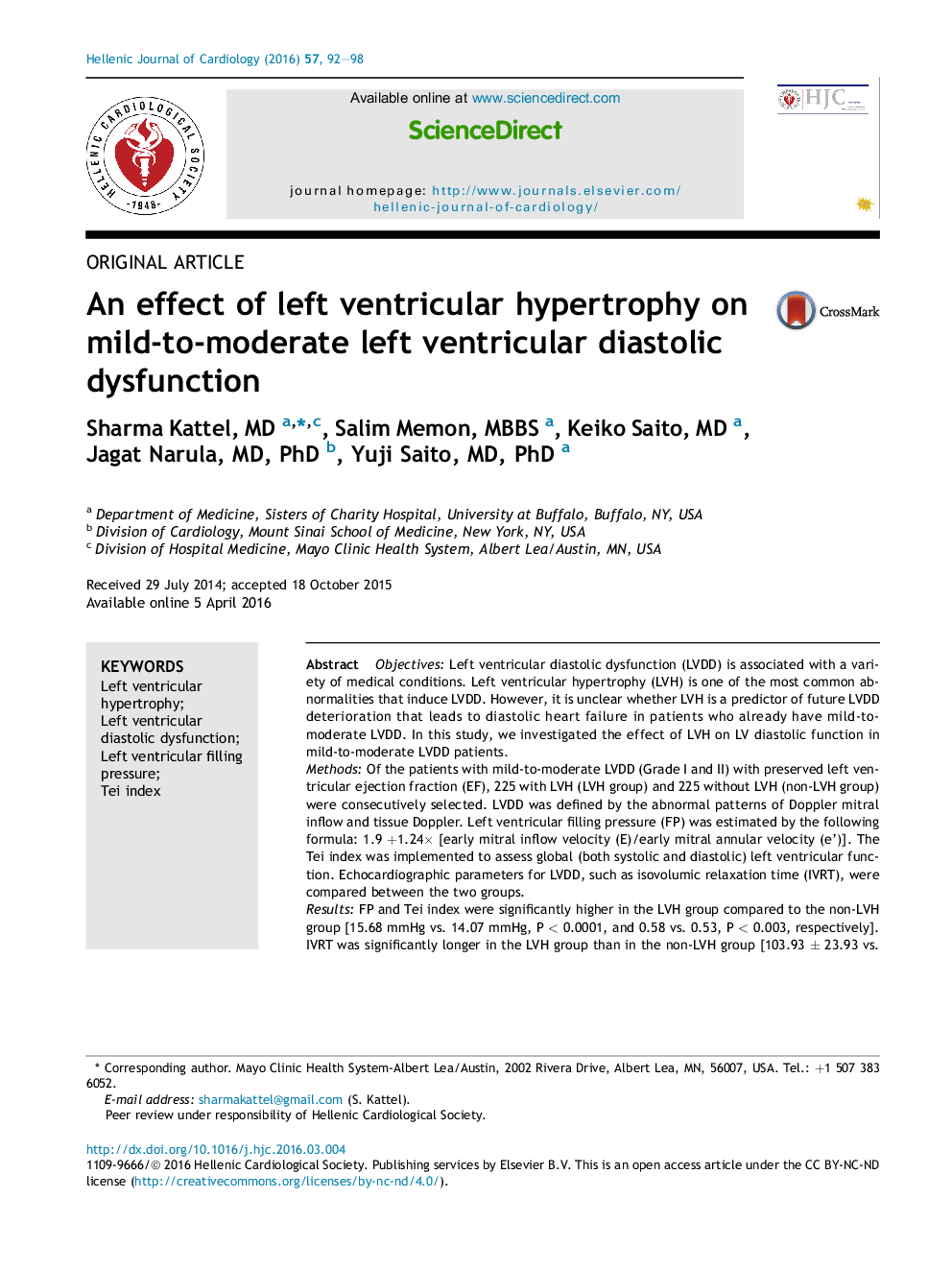| Article ID | Journal | Published Year | Pages | File Type |
|---|---|---|---|---|
| 2925970 | Hellenic Journal of Cardiology | 2016 | 7 Pages |
ObjectivesLeft ventricular diastolic dysfunction (LVDD) is associated with a variety of medical conditions. Left ventricular hypertrophy (LVH) is one of the most common abnormalities that induce LVDD. However, it is unclear whether LVH is a predictor of future LVDD deterioration that leads to diastolic heart failure in patients who already have mild-to-moderate LVDD. In this study, we investigated the effect of LVH on LV diastolic function in mild-to-moderate LVDD patients.MethodsOf the patients with mild-to-moderate LVDD (Grade I and II) with preserved left ventricular ejection fraction (EF), 225 with LVH (LVH group) and 225 without LVH (non-LVH group) were consecutively selected. LVDD was defined by the abnormal patterns of Doppler mitral inflow and tissue Doppler. Left ventricular filling pressure (FP) was estimated by the following formula: 1.9 +1.24× [early mitral inflow velocity (E)/early mitral annular velocity (e')]. The Tei index was implemented to assess global (both systolic and diastolic) left ventricular function. Echocardiographic parameters for LVDD, such as isovolumic relaxation time (IVRT), were compared between the two groups.ResultsFP and Tei index were significantly higher in the LVH group compared to the non-LVH group [15.68 mmHg vs. 14.07 mmHg, P < 0.0001, and 0.58 vs. 0.53, P < 0.003, respectively]. IVRT was significantly longer in the LVH group than in the non-LVH group [103.93 ± 23.93 vs. 95.94 ± 20.16, P < 0.0001].ConclusionsIn mild-to-moderate LVDD patients, both FP and the Tei index were significantly higher when LVH was present. This may suggest LVH as a possible predictor for the future development of severe LVDD and diastolic heart failure.
